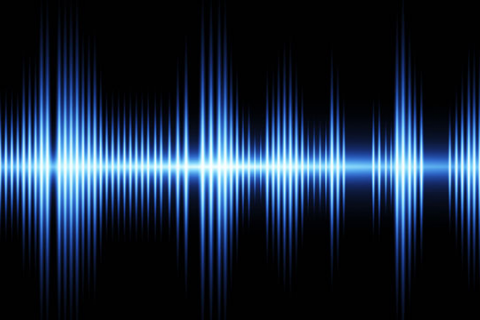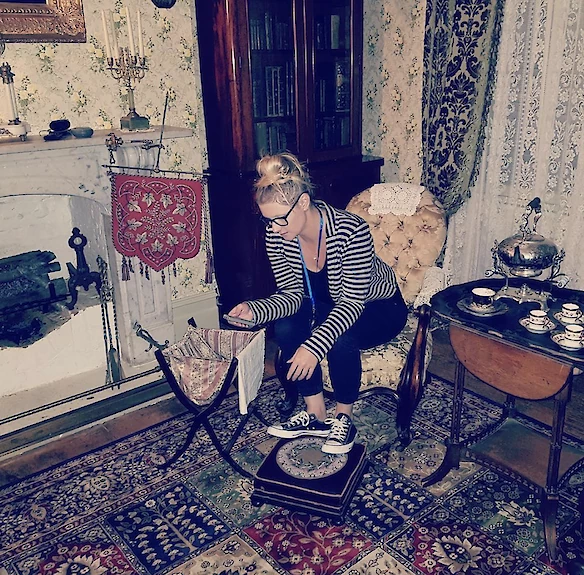

EVP Class System
You are probably familiar with terms like "Class A EVP" often talked about on popular paranormal tv shows or by investigators, but what does it actually mean? Where did the class system come from and how was it adapted into modern-day paranormal investigation?
EVP stands for Electronic Voice Phenomenon. It happens when a person uses a recording device such as a digital recorder to record audio. Upon playback, people hear voices or sounds that they did not hear with their own ears. While there are a few explanations and possibilities as to what it could be, many people believe that these voices are spirits who are trying to communicate with us. EVP is a form of ITC that stands for Instrumental Transcommunication. It refers to communication to the beyond using electronic devices. Items such as spirit boxes also fall under the ITC category for example. The term Electronic Voice Phenomenon itself was first mentioned in the book ‘‘Voices from the tapes: recordings from the other world’ by Peter Bander (1973).
The original EVP class system
EVPS are generally separated into what are called ‘classes’. They are a category that rate how good the EVP is based on how easy it is to understand. The class system was originally introduced by Konstantīns Raudive in his 1971 book ‘Breakthrough, An amazing experiment in Electronic Communication with the dead’.
• Group “A” consists of voices that can be heard and identified by anyone with normal hearing and knowledge of the language spoken; no special training of the ear is needed to detect them.• Group “B” consists of voices that speak more rapidly and more softly, but are still quite plainly audible to a trained and attentive ear. The ability to differentiate increases with practice, but this is a slow and wearisome process. For this reason it is difficult to use non-regular participants for experimental purposes with group “B” voices.
• Group “C” consists of the most interest voices; voices that give us a great deal of information and much paranormal data. Unfortunately, these can be heard only in fragments, even by a trained ear, but with improved technical aids, it may eventually become possible to hear and demonstrate these voices, which lie beyond our range of hearing, without trouble.
Modern-day EVP Class system
Sarah Estep is considered to be one of the more modern-day pioneers when it comes to EVP research. In 1982, Sarah founded the American Association of Electronic Voice Phenomena. While Sarah herself recorded up to 25,000 tapes, she spent her time helping others understand and learn how they could do their own research. What also sets apart Sarah's research compared to that of other EVP researchers such as Konstantin Raudive and Friedrich Jürgenson, was she did not limit her recordings to her basement. Sarah would travel to locations to investigate the claims of a haunting with her trusty recorder on hand. One of the methods she used to validate if she felt a location was haunted was by attempting to record EVP at the location.
I have further explored through my tape recorder whether unexplained manifestations
at haunted locations are the result of conscious intervention by discarnate entities.Sarah Estep
Voices of Eternity 1988
It was this form of research that help make the digital recorder a popular piece of equipment for investigators to carry in their case. Not only did she help popularise the concept of using a recorder as a tool for paranormal investigating, but it is also Sarah's interpretation of the class system that is still widely used today.
It is astounding to receive any communication from another dimension. Even hearing raps, which many people who sit in séance circles have reported, boggles the mind. How much more startling if the unseen can come through with even one word on recording tape! Most messages, I discovered, are faint, whispery voices I call Class C. Headphones must be worn to hear them, and rarely can all the words be interpreted. Class B messages are louder and clearer and can often be heard without headphones. Class A voices are the most gratifying. Loud and clear, they can be duplicated onto other tapes. No headphones are required.
Voices From Eternity
Sarah Estep 1988
Some people incorrectly state that it was Sarah who developed the system, however, we know from above it was first mentioned many years earlier by Konstantin Raudive in his book Breakthrough: An Amazing Experiment in Electronic Communication with the Dead (1971). Even so, we cannot deny the influence Sarah has had in EVP research. If you would like to learn more about Sarah and her work, check out my article Ladies of Paranormal Past: Sarah Estep
A generalised class system
While the class system was originally different back in the 1970s when it was created, it has been modified over the years to suit a more balanced approach to paranormal research, accepting that not every sound is potentially an EVP. In modern-day paranormal investigation, the class system is now generally broken down by paranormal investigators in a similar manner to the following:
• CLASS A: This type of EVP is loud, clear and of very high quality. The voice is easily understandable and does not need enhancement or amplification.
• CLASS B: This is the most common type of EVP. Often needs some sort of enhancement or amplification to be understood. The voice may not be clear enough to be understood or there may be disagreement between reviewers as to what it says.
• CLASS C: This is the lowest quality EVP. Even with enhancement and amplification, it may not be enough to make the voice audible or clear. There may even be debate whether or not an EVP is actually present and is often discounted.
Typically, supposed EVPs are usually quite short and are generally only one to four or five words. Rarely will a full sentence will be spoken. The voice often sounds like a faint whisper or a gasp, however it is usually clear enough that people can distinguish the gender of the voice with people claiming to recognise the voice. Some voices are even spoken with a distinguishable accent. Another trait that seems to be common is that the way it is spoken is often either very fast or very slow.
There is debate from different areas of the paranormal community about how quickly an EVP is either accepted or dismissed. Sometimes people are very quick to determine an EVP is paranormal in nature regardless of the class. At the same time a lot of those who debunk are too quick to dismiss an EVP as a possibility other than a natural explanation. There needs to be a middle ground here. This is where the field of EVP itself requires more attention and more research. More focus is needed on the phenomenon itself and trying to understand it's origins better than simply just trying to record it on tape. Our research doesn't lead us anywhere by just capturing something on tape. What is it? Is it something natural or just something we don't understand? Is it something paranormal? This is where we could work together based on our different backgrounds and beliefs on the matter. Those who work a lot with EVP along with those who are skeptical of the phenomenon, could work together to analyse this class system and really determine if this is the way that we should be ‘classing’ our EVPs. It can help move EVP research in general forward.
What do you think? Do you think the class system is valid and works as it is or does it need an update?
If you want to delve more into EVP, here are some great books I highly recommend.
‘Voices of Eternity’ Sarah Estep (1988)
‘Breakthrough an Amazing Experiment In Electronic Communication With The Dead’ Konstantin Raudive (1971)
‘Speak with the dead: Seven Methods for Spirit communication’ Konstantinos (2004)
‘Voice transmissions with the dead’ Friedrich Jürgenson (1967)
‘Voices from space’ Friedrich Jürgenson (1964)
‘Voices from the tapes: recordings from the other world’ Peter Bander (1973)
‘Parapsychology: A handbook for the 21st Century’ Etzel Cardena, John Palmer & David Marcusson-Clavertz (2015)
I have also compiled a comprehensive guide to EVP called The LLIFS Guide to EVP which is available Worldwide via Amazon and Book Depository and the LLIFS Shop.
If you enjoy LLIFS, consider buying me a book (otherwise known as buy me a coffee but I don't drink coffee and I LOVE books). Your donation helps to fund the LLIFS website so everyone can continue to access great paranormal content and resources for FREE!

Top pages with similar subjects
EVP Burst Sessions 2648
Don't forget to follow the Facebook page for regular updates
Join the mailing list to receive weekly updates of NEW articles. Never miss an article again!
Buy the latest and past issues Haunted Magazine
Check out the books written by LLIFS
